7 Simple Exercises That Improve Balance and Prevent Falls After 60

Staying steady on your feet becomes more critical as the years go by. Balance is not just about preventing stumbles or spills. It’s a key player in keeping you independent, active, and confident in daily life. As you move through your 60s and beyond, maintaining good balance helps preserve your freedom. It boosts your ability to walk, climb stairs, garden, travel, and do everything that makes life rich and enjoyable.
Age naturally reduces strength, joint mobility, and sensory feedback, all crucial for balance. But the good news? You can train balance just like you train strength. With just a few focused movements, you can build a more stable foundation that supports everything else. The result: fewer falls, fewer injuries, and more confidence in your steps.
These seven simple exercises target balance in different ways. Each one builds coordination, strength, and stability in the areas that matter most. Let’s start with one that works your core and upper body together.
7 Balance Exercises To Prevent Falls After 60
Exercise: Plank with Shoulder Taps
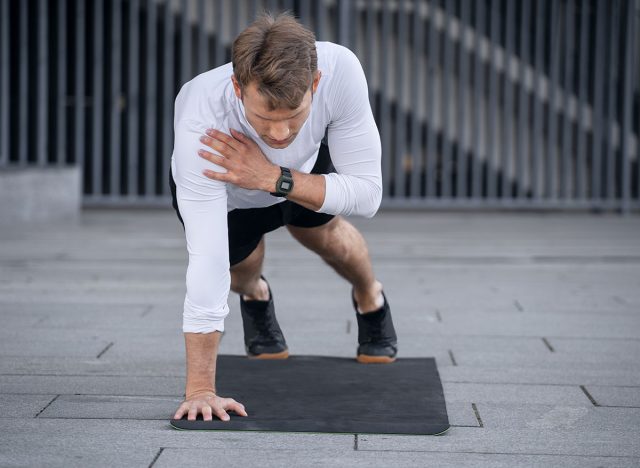
This exercise trains your core to resist rotation, which is essential for balance. It also challenges upper-body stability and coordination by shifting weight side to side, making it a bilateral core move with unilateral demands.
How to Do It:
- Get into a plank position with your hands under your shoulders and your feet hip-width apart.
- Brace your core to keep your hips from rotating.
- Lift your right hand and tap your left shoulder.
- Place your right hand back down and tap your right shoulder with your left hand.
- Alternate sides while keeping your body as still as possible.
Recommended Sets and Reps: Knock out 3 sets of 10 taps per side. Rest for 45 seconds between each set.
Quick Tip: Keep your feet slightly wider to help reduce hip sway.
Exercise: Bodyweight Box Squat
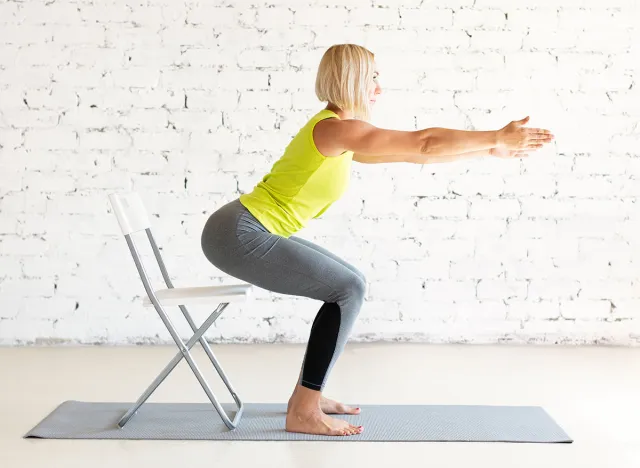
Box squats build lower-body strength and teach control while sitting and standing—a real-world balance skill. They train your hips, glutes, and quads in a bilateral pattern while reinforcing proper mechanics.
How to Do It:
- Stand in front of a sturdy box or chair with your feet shoulder-width apart.
- Reach your arms forward for balance.
- Slowly lower your hips back until you sit lightly on the box.
- Pause briefly without relaxing, then stand back up.
Recommended Sets and Reps: Perform 3 sets of 10 reps, resting for 60 seconds between each set.
Quick Tip: Avoid collapsing onto the box. Control the descent and keep your chest tall.
Exercise: Overhead Carry
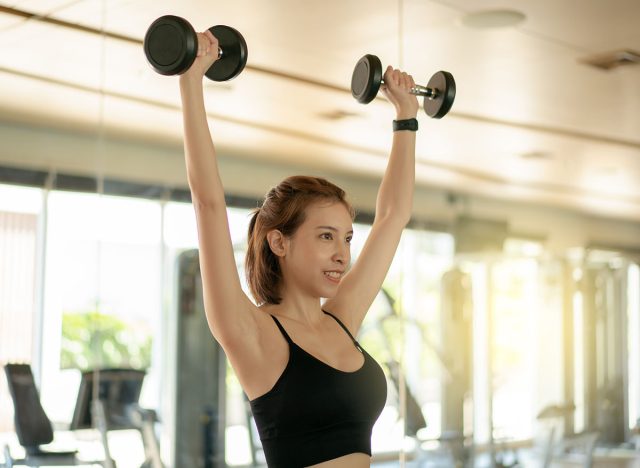
Holding weight overhead while walking builds full-body stability and trains your core, shoulders, and hips to stay aligned. It’s a bilateral upper-body challenge with dynamic, full-body movement.
How to Do It:
- Hold a light dumbbell in each hand.
- Press the weights overhead until your arms are straight.
- Walk forward in a straight line while keeping your arms locked out.
- Keep your ribs pulled down and your steps controlled.
Recommended Sets and Reps: Knock out 3 carries of 20 seconds each. Rest for 60 seconds between each carry.
Quick Tip: Start with a lighter weight. Focus on posture and alignment before increasing time or distance.
Exercise: Single-Leg Balance
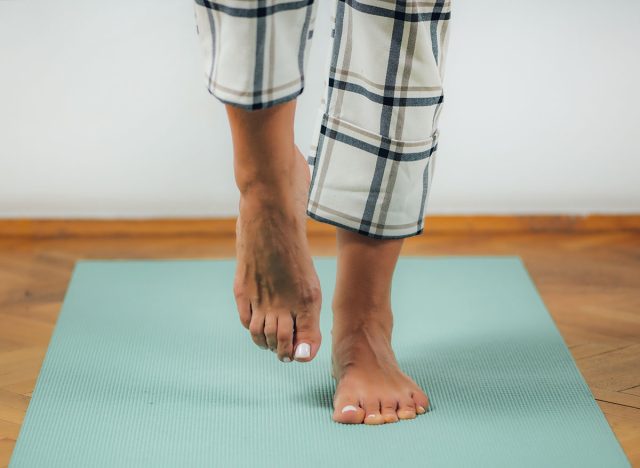
Balancing on one leg strengthens the stabilizers in your ankles, knees, and hips. It’s a unilateral lower-body drill that mimics real-life balance demands.
How to Do It:
- Stand near a wall or chair for support.
- Lift one foot a few inches off the ground.
- Hold the position while keeping your chest upright and eyes forward.
- Switch legs and repeat.
Recommended Sets and Reps: Complete 3 sets of 20 seconds per leg. Rest for 30 seconds between legs.
Quick Tip: Try closing your eyes or standing on a cushion to make it harder.
Exercise: Lunges
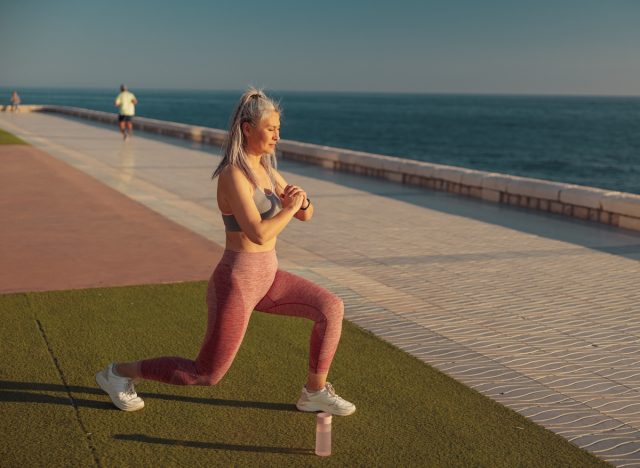
Lunges develop unilateral leg strength and train your body to stabilize during split-stance movement. They mimic walking, climbing, and stepping in daily life.
How to Do It:
- Stand with your feet together.
- Step one foot forward and lower into a lunge.
- Push through your front foot to return to standing.
- Alternate legs with each rep.
Recommended Sets and Reps: Knock out 3 sets of 8 reps per leg. Rest for 60 seconds between each set.
Quick Tip: Keep your front knee stacked over your ankle for better control and balance.
Exercise: Bird-Dog Hold
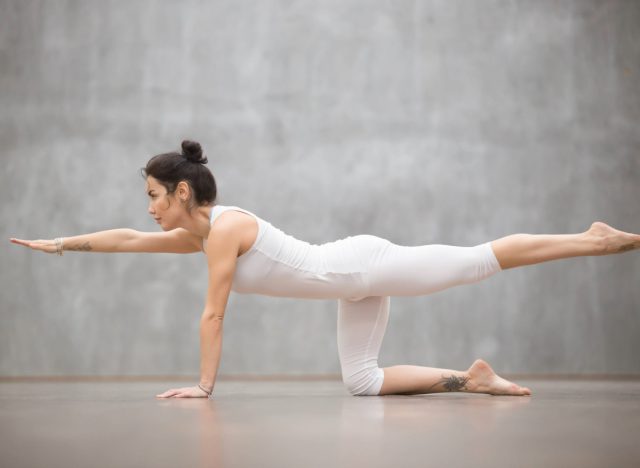
This core and glute-focused move trains cross-body coordination and balance. It challenges your ability to stabilize while moving opposite limbs.
How to Do It:
- Start in a tabletop position on your hands and knees.
- Extend your right arm and left leg until both are straight.
- Hold for a count of five while keeping your spine neutral.
- Return to the starting position and switch sides.
Recommended Sets and Reps: Perform 3 sets of 5 reps per side. Rest for 45 seconds between each set.
Quick Tip: Don’t let your lower back sag. Engage your core throughout the hold.
Exercise: Standing Marching
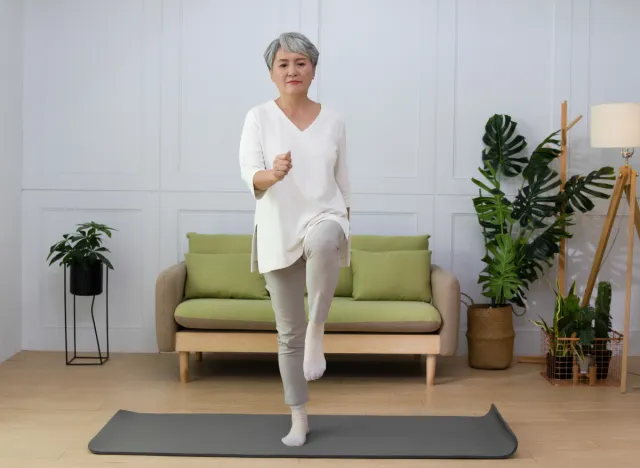
Marching in place builds hip strength and coordination while simulating a walking pattern. It teaches dynamic balance and posture control.
How to Do It:
- Stand tall with your arms at your sides.
- Lift your right knee to hip height.
- Lower it and lift your left knee.
- Continue alternating knees in a smooth, controlled rhythm.
Recommended Sets and Reps: Complete 3 sets of 20 total marches. Rest for 30 seconds between each set.
Quick Tip: Drive your arms as if walking to add rhythm and coordination.